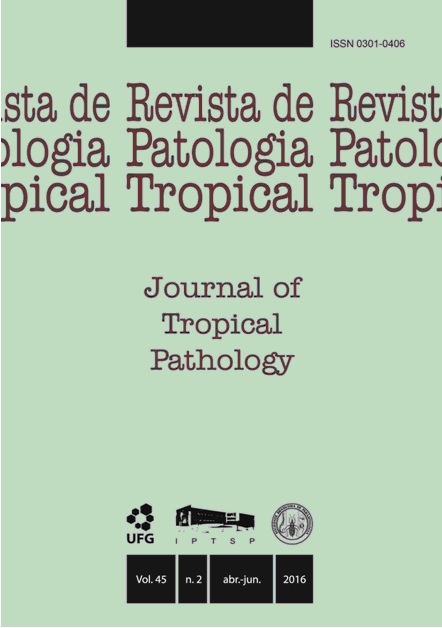FREQUENCY OF PARASITIC STRUCTURES IN BATHROOMS AND CLASSROOMS IN PUBLIC SCHOOLS IN TERESINA - PI, BRAZIL
DOI:
https://doi.org/10.5216/rpt.v45i2.41776Keywords:
Schools, infections, parasites.Abstract
In the present scenario, infections by helminthes and protozoans are among the most frequent,presenting high rates of prevalence especially in locations where there is great flow of people associated with poor sanitary conditions. Based on this information, we proposed an investigation of the parasitic structures most frequently found in bathrooms and classrooms in public schools in the city of Teresina (PI, Brazil). The collection was carried out in 24 public schools in Teresina – 12 state schools and 12 municipal establishments. The swab technique, adapted for surfaces, was applied to verify the parasitic structures detected in each school. A total of 105 slides from the municipal schools were analyzed; of these, 22 slides (20.9%) presented some type of parasitic structure. For the state schools, 102 slides were analyzed, of which 25 (24.5%) tested positive for different types of parasite. Among these, the most frequently found were Ascaris sp. eggs (88.9%), followed by Balantidium sp. cysts (5.6%), Enterobius sp. (2.8%) eggs and Taenia sp. eggs (1.9%). In total, 107 parasites were identified in the school buildings of the public education network.
Downloads
Downloads
Published
How to Cite
Issue
Section
License
The manuscript submission must be accompanied by a letter signed by all authors stating the full name and email address, confirming that the material has not been published or is under consideration for publication elsewhere, and agreeing to transfer copyright in all media and formats for Journal of Tropical Pathology. The authors will not be paid for published articles. They are solely responsible for the content of those articles, even if the Editor holds the right to adjust them to the norms of the journal.
The reviewers will not be paid for the peer review process.

